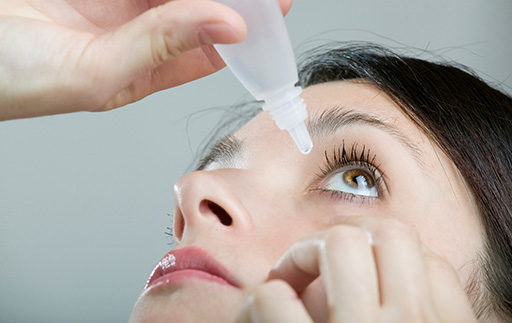Eye Irritation and Watering May be More than You Think
- Posted on: Mar 15 2019

Dry, irritated eyes have become somewhat of a normal symptom in our digital age. The term digital eye strain is commonly used to describe the burning, blurring, tearing, and general irritation we encounter when we stare at our computer screen or smartphone for too long. Because most people encounter these symptoms, they may overlook the potential plight of their eye health as a whole. The symptoms they may be living with from day to day may indicate dry eye syndrome, a chronic condition that calls for proper medical attention.
Dry eye syndrome is insidious; it often appears so subtly and infrequently that it seems nothing more than a minor nuisance. Over time, though, bouts of eye irritation increase. The process may occur so gradually that a person struggles with symptoms for months or years before speaking with their doctor or scheduling an eye exam. Statistics indicate that approximately one-third of adults live with dry eye disease, many of them without knowing it.
What is Dry Eye Disease?
Dry eye disease, or dry eye syndrome is a term that describes an insufficient tear film. Tears are produced in a gland within the eye. Tears are then dispersed across the ocular surface when we blink. Finally, tears drain out of tiny tubes at the lower part of the eye. Each step in the process is vital to the quality of our tears. When disruption occurs at any point, the dried eye exhibits uncomfortable symptoms. Depending on the severity and longevity of dry eye symptoms, there is the potential for corneal damage that impairs eyesight. This is only one of the reasons why early treatment is important.
The Problem with Dry Eye Syndrome
Dry eye can be challenging for several reasons. First, as we mentioned, many people mistake ongoing symptoms for simple eye strain. Proper diagnosis is achieved through particular testing that may involve:
- Symptom questionnaire in which the severity, frequency, and other details are self-reported.
- Tear breakup time shows how quickly tears evaporate from the surface of the eye.
- Tear-film osmolarity test indicates the salt-to-water ratio in tears.
- Schirmer tear test, provides a measurement of tear production.
- Corneal fluorescein staining observes the cornea for signs of damage.
Studies indicate that dry eye disease can be as negatively impactful as angina (chest pain) symptoms. If you are relying on eye drops to get through the day, you may benefit from a thorough eye exam and screening for dry eye disease.
Contact our Chester office at 908.879.7297 to schedule your visit.
Posted in: Eye Care


